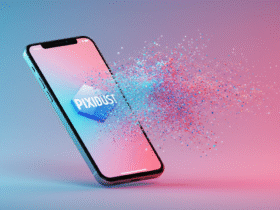In the current era of digitalization, content creation has become a fully fledged profession for many. From blogging to video production and even social media posting, one can earn by using their creativity in a myriad of ways. If you are wondering how content is monetized, you are certainly not the only one. In fact, understanding how to monetize content is a crucial first step for every digital creator. But where do you begin? What steps do you need to take to ensure your content brings you income?
It doesn’t matter if you are a blogger, YouTuber, influencer or a podcaster, in this article I will provide tips that will help everyone tremendously increase their earning potential, allowing them to make money through their passion.
What is Content Monetization?
Before we discuss the ways of earning money from content, it is important to explain what content monetization is.
Definition of Content Monetization
The simplest explanation for content monetization is earning revenue from any digital content. This includes advertisements, sponsored content, affiliate sales, selling personal merchandise, or any revenue-generating activity based on your content. Attention you receive as a result of sharing and valuable content can be monetized through various strategies.
Why Should You Monetize Your Content?
In the creatorship economy, content monetization is no longer an option but an urgent requirement and here’s why.
-
Financial Independence: Monetization lets the creator earn from passions be it writing, video production or social media.
-
Scalability: Expanded reach means increased monetization opportunities.
-
Creative Freedom: Monetization gives motivation to create more because it is sustainable.
With this, you may now consider the strategies for transforming your content into a source of income.
Ways to Turn Your Content into Cash
Affiliate Marketing
Affiliate marketing is arguably one of the oldest methods of monetizing content for creators and continues to earn its place as a popular method. It is a commission based marketing scheme, where you advertise a product or service and receive payment for a sale made through your referral.
How Affiliate Marketing Works
Once you join an affiliate program, you receive an affiliate ID which is specific to you. This ID will be embedded in a hyperlink that you’re required to place within your blogging content, Youtube videos, social media posts or even podcasts. Once the link is clicked and a purchasing transaction is made, you earn a commission.
How to Get Started with Affiliate Marketing
-
Choose a Relevant Affiliate Program: the first step involves searching for affiliate available programs that match your field of specialty. For instance, is you are an influencer on tody fitness, it would be wise to join an affiliate program that has fitness related merchandises eg protein powder supplementary meals or any other pertaining equipment utilized in a gym.
-
Integrate Affiliate Links Naturally: Invite your audience to utilize your links in ways that best suit your offer. Avoid hard selling and make offerings to the audience that can benefit them. For instance while drafting a blog post such walk should link all the mention products either through the text, in reviews of the products or recommended documents which is dubbed as in-text links.
-
Track Your Performance: Monitoring tools can show which affiliate links are working best. This will allow you to further enhance your strategy and promote products that connect the best with your audience.
Pro Tips for Affiliate Marketing Success
-
Choose Products You Believe In: Make sure to only advertising products and services you trust and believe in because your audience trusts you and your reputation can be impacted.
-
Diversify Your Affiliate Programs: Don’t put all your eggs in one basket when it comes to using one affiliate program. Sign up for different programs to increase your chances of earnings.
Ad Revenue
Monetizing your content through ad revenue is another way of making income. Through advertising on YouTube, Google, and Exense, advertisers can pay content creators to place ads before, during, and/or after their content.
How Ad Revenue Works
The mechanisms that generate revenue from advertisements are based on a specific ad system usually using Cost Per Thousand or a specified amount Per Click (CPM or CPC) model. Under CPM, content creators are paid depending on how many views their videos get, while under CPC content creators are paid depending on how many times their ads are clicked on.
Maximizing Ad Revenue
It’s important to always be providing high-value content constantly. Achieve and maintain large audiences to generate greater ad revenue.
-
Target High-Traffic Topics: capitalizing on trending or evergreen topics will increase chances of wider audience reach.
-
Optimize for SEO: make sure your content is search engine friendly like using applicable keywords and meta titles and tags as well as descriptions to make your content more accessible.
-
Experiment with Different Ad Formats: Various ads are available on platforms such as YouTube, including display ads and skippable and non-skippable video ads. Explore all available options to understand which ad types transmit the strongest message to your target audience.
Pro Tips for Ad Revenue Success
-
Don’t Overload Your Content with Ads: Overly aggressive advertising within your content is likely to repel viewers. Find an equilibrium between advertisement usage, content monetization, and customer satisfaction.
-
Increase Viewer Engagement: Strong user engagement, in terms of likes and comments, significantly improves a channel’s chances of being recommended by various platforms, resulting in higher viewership and revenue streams.
Sponsored Content
This is one of the most straightforward methods of content monetization. Businesses pay creators to incorporate their products or services into the content.
How Sponsored Content Works
Across various social media platforms, brands sponsor posts, whereby the content creator crafts promotional content for the product or service. Within the frameworks of the agreement, content creators receive payment for producing a specified amount of paid content, be it a blog, a video, social media posts, or even audio podcasts.
How to Attract Sponsors
To get sponsors, tap into influencers because you need to demonstrate that you can be a viable partner with relevant audience members. Here is how to do it:
-
Build Your Brand: Share content within your area of expertise, where you have value and/or insight to give that, alongside build trust and credibility as an authority in that space. Post consistently, and use high quality visuals that align to the target demographic.
-
Create a Media Kit: A media kit is a formal document that details your target audience, engagement levels, and highlights any successful past campaigns. It allows brands to decide whether your platform is suitable for their desired audience.
-
Reach Out to Potential Sponsors: Having identified and compiled the relevant data, now is the time to reach out to prospective sponsors. This can be accomplished by contacting brands that you think will complement your content and resonate with your audience.
Pro Tips for Sponsored Content Success
-
Stay Authentic: Always ensure that the promoted item meets the authentic expectations and trust held by the audience.
-
Disclose Sponsored Content: Inform users about sponsored content in a timely manner without beating around the bush. Audience trust is built through credibility, which is knowing what the user portrays.
Selling Your Own Products or Services
If you are knowledgeable in a certain industry or have a particular brand, you are capable of directly selling products or services to your audience.
Types of Products to Sell
-
Physical Products: Items like branded T-shirts, mugs or even hats.
-
Digital Products: eBooks or even courses, if provided and are useful to your audience.
-
Services: Consulting, coaching or other freelance services based on your expertise.
How to Set Up an Online Store
These days, setting an online store has been simplified. Etsy, Shopify, and Gumroad are just some of the websites that allow creators to sell, they do not need to be extremely tech savvy.
-
Choose a Platform: Choose between physical digital selling and suited platforms.
-
Create High-Quality Products: Sale depends solely on product quality and importance.
-
Market Your Products: The best promotional strategy comes from your own content. Blogging, vlogging or even running social media accounts could do product placements.
Pro Tips for Selling Products
-
Offer Limited-Time Promotions:Create suspense by offering time sensitive purchases.
-
Engage Your Audience: Regular discussions, engaging content and fostering trust can encourage secondary purchases.
Memberships and Subscription Models
Through platforms like Patreon, and Substack creators can offer exclusive content to those who pay. This has proven effective for establishing a steady revenue stream.
My Opinion
Monetizing your content is not an easy or quick task. It involves a lot of thought, strategizing, and hard work. However, with the correct techniques, it is absolutely feasible to turn your passion into a sustainable income.
Consider starting off with one or two suggestions I have provided within this article, and as you expand, work towards creating multiple sources of income. Be it through affiliate marketing, advertising, or selling your own products—ensure that you stay disciplined, as that is key to finding success.
So why the delay? Your content could yield an income for you—start monetizing it now!

















Leave a Reply
View Comments